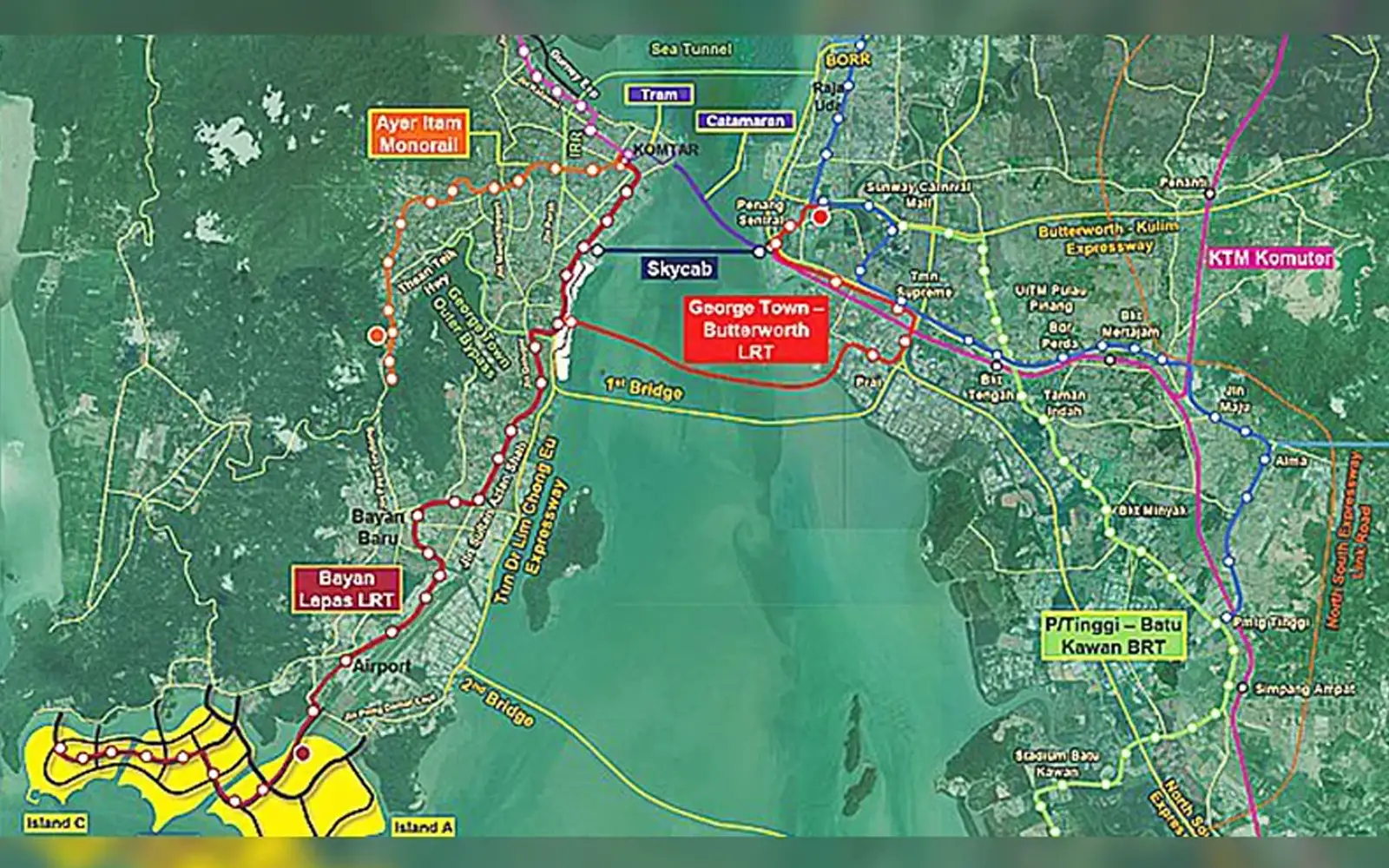Why is Penang govt obsessed with LRT?
The Penang Transport Master Plan approved in 2013 did not recommend light rail transit as a mode of public transport.

From Lim Thean Heng
Finally, with funding from the federal government, a tender will soon be called to bid for the first Penang light rail transit, or LRT, project.
The project was proposed and pushed by SRS Consortium Sdn Bhd, which will also reclaim Silicon Island south of Penang island.
It should be pointed out that the Penang Transport Master Plan (PTMP), formulated by Halcrow and approved by the Penang government in 2013, did not recommend LRT as a mode of public transport. At the time, the PTMP recommended trams and buses that were said to be more flexible and economical.
Recently, we witnessed a discussion over the merits and demerits of LRT against other much cheaper systems, such as the hydrogen-powered autonomous rail transit (ART) that has been implemented in Kuching, Sarawak.
Here, I would like to raise the fundamental question: why is the Penang government obstinately sticking to LRT as the preferred mode of public transport?
A bit of history is in order.
In 2016, transport engineers from University Sains Malaysia (USM) were engaged to do a technical peer review of the SRS proposals.
Unfortunately, the USM team was denied possession of the most critical multi-modal transport planning software that contains the basic parameters and assumptions, such as population projections, expected ridership, etc., to help justify why a particular transit system was recommended.
Other important reviews not carried out in 2016 were the financial viability study and the long-term operational and maintenance requirements for the three different transit systems proposed by SRS – LRT, monorail, and trams.
The state government that claimed competency, accountability and transparency (its CAT mantra) should have done what Singapore did in 1980, which encouraged robust internal and public debates as well as feedback on its proposed MRT transit systems before implementing it.
Instead, the state government has insistently promoted the LRT as pushed by SRS. Why?
For those in corporate businesses and familiar with how things work, let us review how and why some major projects got implemented in Penang:
- The first Penang Bridge was designed to last over a hundred years. Yet, barely 25 years later, its steel cables and box girders were all replaced by a French company at a cost of RM150 million because it claimed the original cables were overstressed beyond design limits.
- Also, the first Penang Bridge was already designed for widening from four to six lanes when required. Yet, additional piles on both sides of the bridge were added to bring the contract sum to RM580 million.
- The new multi-storey carpark at the Penang International Airport. Despite knowing that there were plans to locate a public transit system station adjoining the airport, this new car park was built beside the airport preventing future location of the transit station next to the airport. Furthermore, the car park was built without linking it to the airport. And as an afterthought, a complicated undercarriage steel structure supporting the link bridge is now being constructed.
- What about the costly lessons with all the Klang Valley transit systems eventually having to be bailed out by the government at the cost of billions of ringgit shouldered by Malaysian taxpayers?
We should all be concerned with special projects like the above costing millions or billions getting prioritised and implemented, especially with government bodies having neglected to perform their due diligence competently; and consultants failing to carry out their work with professional integrity.
Penang should have learned from both Singapore and the Klang Valley experience. In fact, the state government should have used the lull period since 2016 to perform due diligence to have the PTMP reviewed by independent consultants as regards both the technical and financial aspects as pointed out above.
Now that we have the RM10 billion financing from the federal government, I strongly urge the Penang government to appoint independent consultants to review and recommend the most suitable transit system for Penang.
Why would any right-thinking person object to such an independent review?
Lim Thean Heng is a former chief transport engineer for the Penang government.
It's not obsessed, but a determination, that I concur, that low-cost half-measures like trams and busses only - will not provide long-term solutions. Though busses definitely are a necessary part of the solution.
ReplyDeletePenang needs to o "Go Big" on its transport Master plan.
Half-assed measures will produce half-assed results for the Penang Transport system